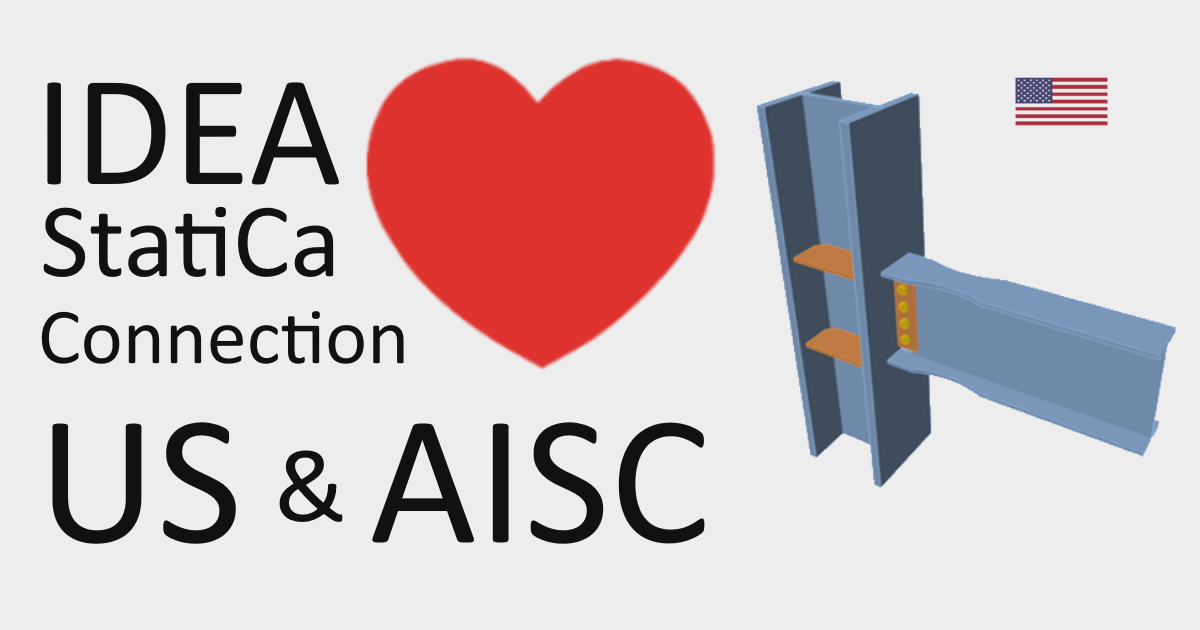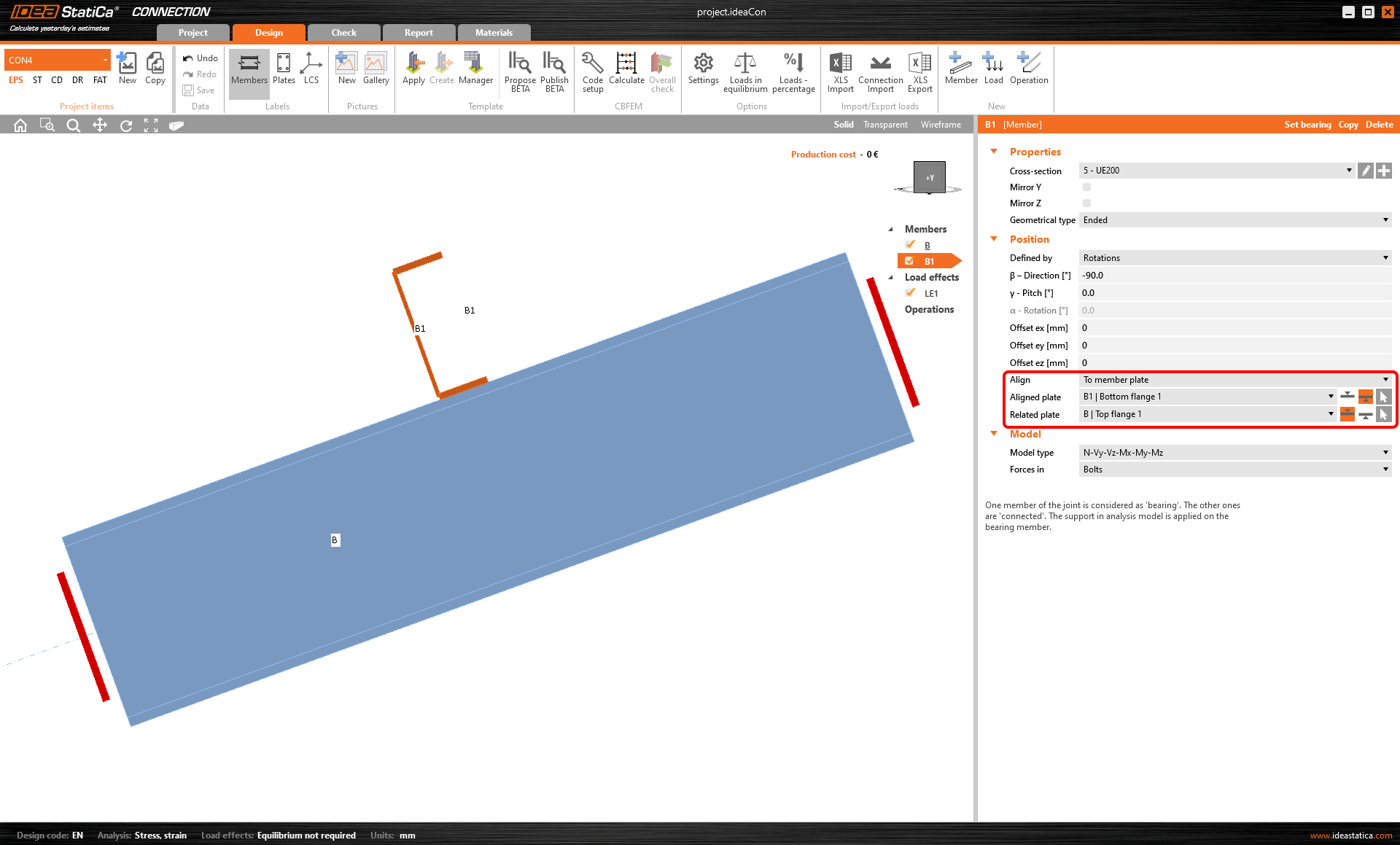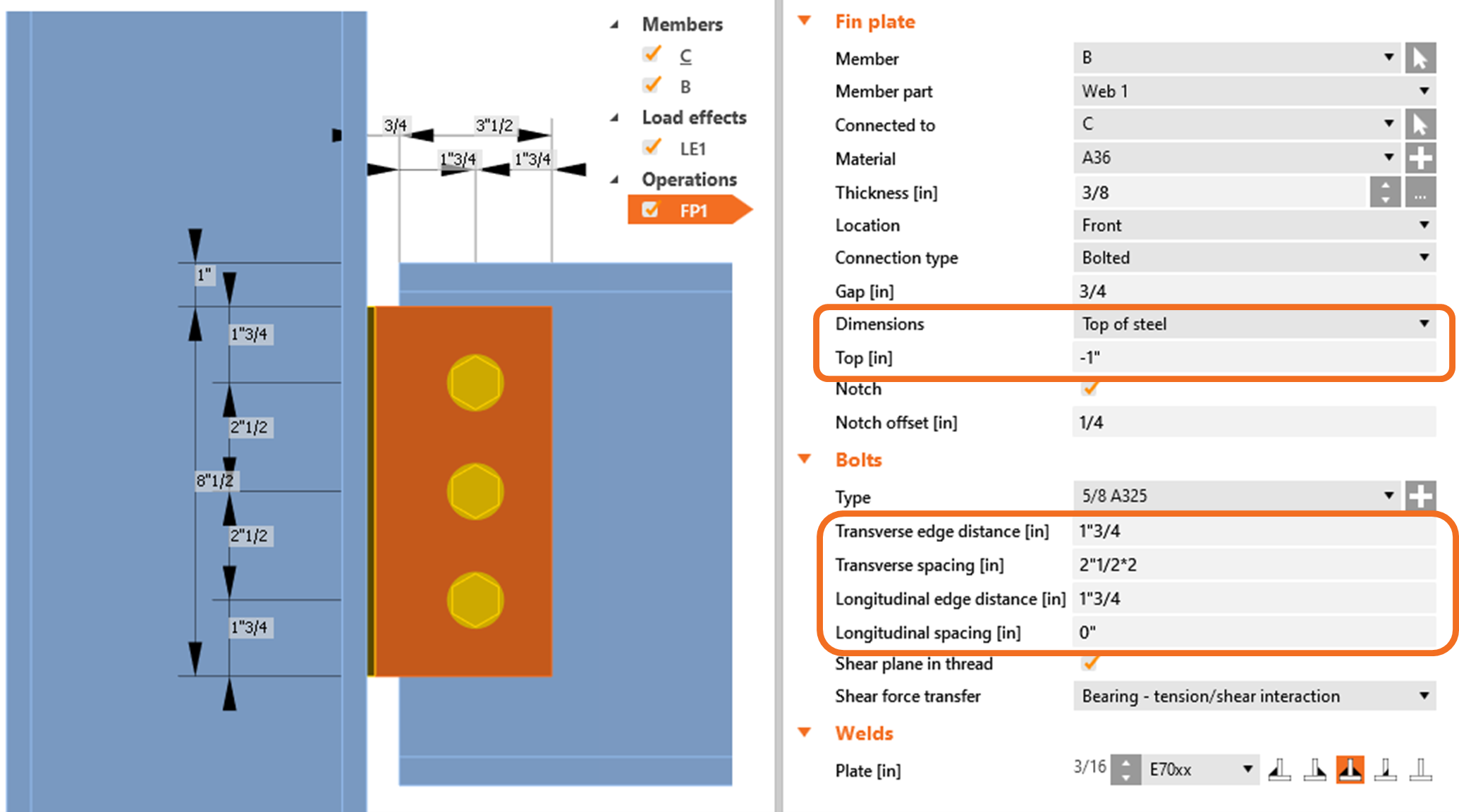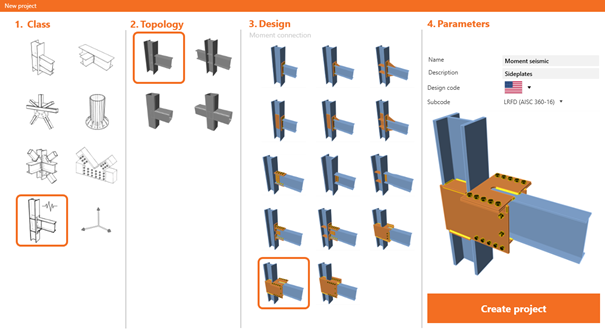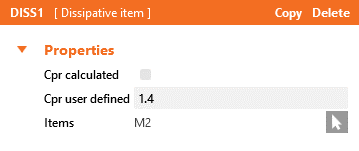New features for US-based users
In our latest blog article, we focus on our US customers and AISC code users in order to make their lives easier by providing sets of localization features and improvements. Whether it is about the way to input under the imperial unit system, specific materials, and full code-checks, or new templates, we are keen to satisfy all of you in the United States and similar specific regions.
Let's take a look under the hood of this latest release of IDEA StatiCa version 21.0.
Top of steel – align members plates
Listening carefully to your wishes, we put an end to struggling with aligning member plates. With total freedom in modeling the topology of connected members and all other parts, the program has always offered an option to shift and rotate when you e.g. needed a beam or purlin to sit on another sloped beam.
This was not a problem when treating the European standard sections, but proved to be a challenging task with the US sections.
Think fast, develop faster – here it is, this new feature offers an elegant input of any surface to the surface alignment of members and stiffening members.
Read more in the thorough blog post Alignment of member's plates will make your work easier with the detailed description, videos, and links to more resources.
Imperial units input and settings
You may have felt confused when inputting dimensions of various items in inches. Getting to the desired configurations could have been a pain in some cases. This is over with the implementation of the established format of dimensions for imperial units.
From now on, for all dimensions in the software, such as plate thickness, lengths, bolt spacing, member offset, etc., you can type in the values in inches in both imperial and decimal formats, such as:
2'-0"3/4, 2-0"3/4, 2-3/4, 3/4 [in,ft] for Imperial format
1, -1, 15, 0.75 [in,ft] for Decimal format
Especially for bolts, you can now define the transverse and longitudinal spacing much more easily. Adding a "space" between two values means the second distance value is measured from the first bolt while adding a "semicolon" means the second distance value is measured from the beginning ignoring the first bolt position, like:
2"2/3 3" or 2"2/3;3" [in,ft] for Imperial format
0.15 0.12 or 0.15;0.12 [in,ft] for Decimal format
In other words, the position of bolts can be defined either relative to the first one (space separator) or in an absolute manner (semicolon separator).
See how to change from metric to the imperial system in How to change units in IDEA StatiCa Connection or take a look at the beginner's webinar recording Tackling IDEA StatiCa Connection - The basics and find out more about the general settings of the software.
AISC templates for seismic design
We have covered the seismic checks with the Capacity design analysis type in older versions already. The aim of this analysis is to confirm that a building is capable of a controlled ductile behavior to perform appropriately in a design-level earthquake.
In the article, An advanced approach to seismic code-check of steel connections read how the capacity design analysis is incorporated in IDEA StatiCa, or open the real project and try it on your own with help of the AISC localized tutorial Capacity design (AISC).
Since about half of the buildings constructed in North America have some level of seismic design requirements, we keep improving in this field as well - a new class of connections has been added when starting a new project. For now, the twenty-nine starting templates according to ANSI/AISC 358-18 for capacity design check (seismic templates) should cut off the modeling time.
User-defined Cpr for seismic Capacity design
First things first. We introduced the CBFEM based Capacity design for seismic code-check with the value of Cpr calculated automatically as per equation AISC 318-18w, Eq. (2.4-2). Cpr is the factor to account for peak connection strength, including strain hardening, local restraint, additional reinforcement, and other connection conditions). To get more theory, look at Capacity design according to AISC
Now, you can set your own custom value, as what you feel fits to your engineering judgment or experiments. Just uncheck the “Cpr calculated” option and define the user value.
All AISC design code variants covered
In previous versions, the most used AISC variants for code-checks were available. We now included both AISC 360-10 and AISC 360-16, so you can choose from:
- LRFD - AISC 360-16
- ASD - AISC 360-16
- LRFD - AISC 360-10 (added in version 21)
- ASD - AISC 360-10 (added in version 21)
The bolt assembly differences between AISC 360-10 and 360-16 are implemented as well.
See the AISC code-checks for bolts in Check of bolts and preloaded bolts according to AISC or browse the complete Theoretical background documents for the CBFEM based program Connection regarding the AISC code.
Wider US materials library
A small step for the material database, a giant leap for some of you!
We have added several new steel grades to the software so you no longer need to manually input them into your models or import it from your sheets as described in the User-defined material properties article.
New materials:
- ASTM F1554
- ASTM A1043(M), Gr. 36
- ASTM A1043(M), Gr. 50
- ASTM A1065, Gr. 50
- ASTM A1085(M), Gr. A
- A500, Gr. B, Round
- A500, Gr. B, Shaped
- A500, Gr. C, Round
- A500, Gr. C, Shaped
What else?
We hope you like this development step for IDEA StatiCa Connection and find uses for those new features as we continue to improve for US engineers.
If you haven't tried our software yet, now is the best time to go for it! You can try it for 14 days absolutely for free with no limits in functionality.
Stay tuned for the next releases and more and more love (improvements) we bring into providing the best steel connection software ever to the engineering society today.
Calculate yesterday's estimates!


